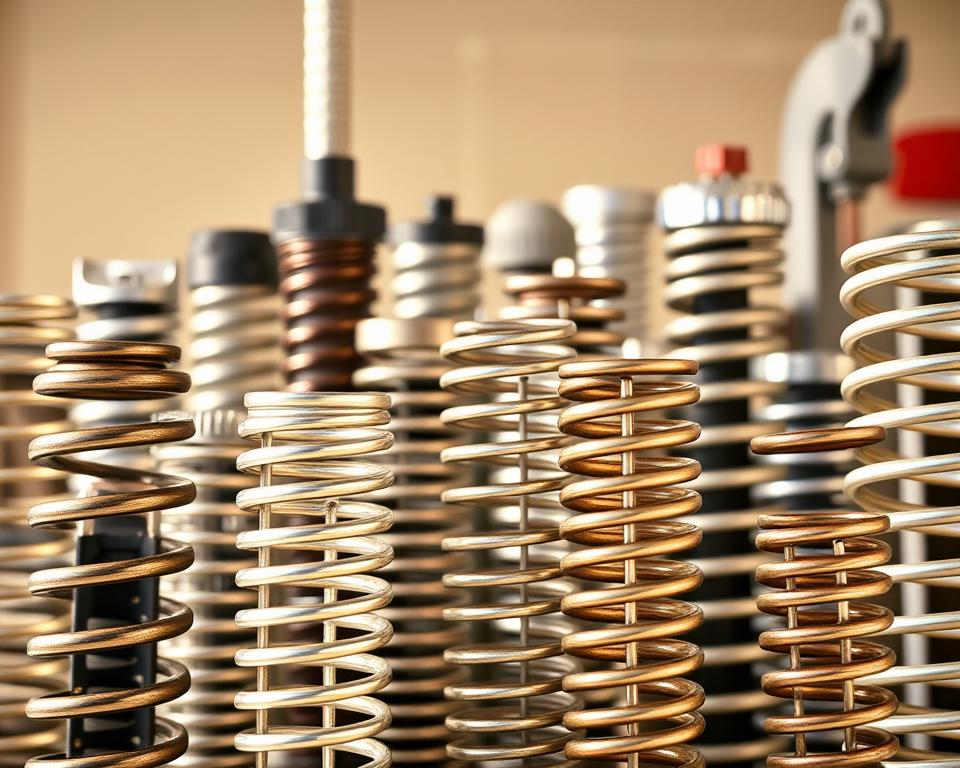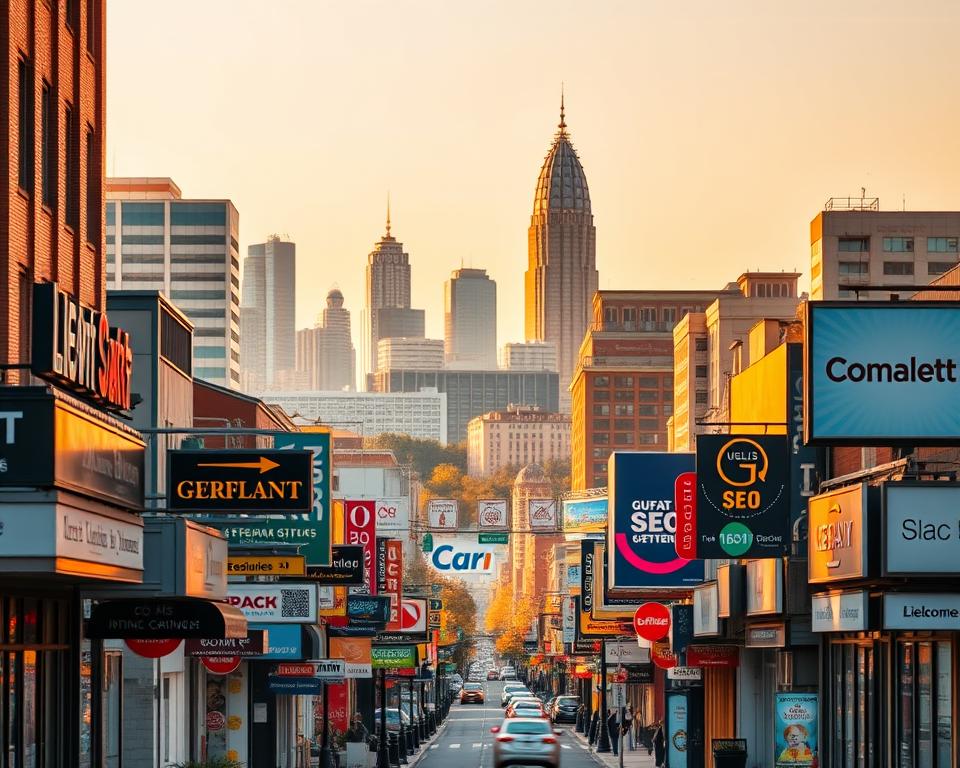The Ultimate Guide for Selecting an Elite Online Digital Agency in 2025
Were you informed that a vast majority of companies intend to increase their digital promotion budgets by 2025? This shift underscores the growing significance of allying with a proficient group to keep pace. In these times when tech rapidly transforms rapidly, picking a dependable ally is crucial to guarantee enduring success.
Marketing 1on1 excels as a foremost contender, offering tailor-made solutions suited to your business needs. Their emphasis on analytics-based judicious choices ensures quantifiable outcomes. Given trends including AI integration and hyper-personalized campaigns, they support enterprises stay ahead of the curve, with them being the leading biggest digital marketing company 2025.
This handbook will escort you through the critical considerations to consider when selecting a growth ally. Starting by comprehending your aims to measuring know-how, you can make an educated selection.
Principal Conclusions
- Significant enterprises aim to increase their digital advertising expenditures by 2025.
- Marketing 1on1 delivers bespoke solutions that yield quantifiable outcomes.
- The fusion of AI integration and extreme personalization drives the evolution of marketing.
- Information-guided strategies set apart superior agencies.
- This guide helps you choose the right partner for long-term growth.
An Introductory Look at Digital Marketing Agencies
Modern businesses rely on specialized expertise to realize their ambitions. A digital marketing agency serves an essential function in guiding organizations through the complexities of today’s marketing landscape. Such firms provide an extensive array of services, ranging from SEO and sponsored media to analytics and CRM systems.
Diverging from old-school establishments, modern consultancies exploit AI-enhanced technologies to fine-tune initiatives. To cite one instance, VMA’s activities on the Gold Coast demonstrate diverse channel mastery, merging website creation, video advertising, and bespoke plans. This technique secures companies maintain superiority amid fierce competition.

Exploring the Nature of a Digital Marketing Agency
A marketing agency acts as a comprehensive ally managing all facets from SEO to data analytics. Agencies like Marketing 1on1 integrate automation tools to streamline processes and improve efficiency. This shift from project-based to ongoing performance partnerships ensures long-term success.
Centering on analytics-based strategies, such firms yield quantifiable outcomes. Whether it’s through AI-powered campaign optimization or hyper-personalized strategies, they help businesses adapt to evolving trends and achieve their goals.
How Digital Marketing Shapes 2025
Tomorrow’s marketing landscape is transforming more rapidly than before, as emerging tools reformulate tactics. Enterprises need to adjust to remain competitive, with comprehension of such shifts being essential. By 2025, digital marketing is anticipated to become progressively fluid, spurred by ingenuity and evolving consumer actions.
Emerging Trends in Digital Marketing
The enhancement of voice search and the inclusion of visual search are turning indispensable. Shoppers now rely more on voice-enabled devices and visual query systems, thus these instruments become crucial for exposure. AI-generated content is also on the rise, but it requires a balance between automation and human oversight to maintain authenticity.
Attribution across multiple channels is swiftly turning into the norm. Such a technique enables firms to monitor consumer pathways over diverse platforms, thereby ensuring an integrated approach. Forecasting analytics—as exemplified by Marketing 1on1—empower agencies to predict trends and remain on the leading edge.
How Online Promotion Firms Respond to New Trends
Firms are capitalizing on analytics to enhance their plans and boost ROI. For example, Disruptive Advertising recovered wasted budgets through detailed data audits, proving the value of analytics. By focusing on advertising methodologies in harmony with new developments, agencies enable enterprises to obtain tangible impacts.
Technologies like AI and ML are reconfiguring the administration of initiatives. Such innovations allow companies to fine-tune search engine results and curate individualized experiences. Swift adjustment to new phenomena secures lasting achievement for both consultancies and their customers.
Core Services Provided by Digital Marketing Agencies
In a swiftly evolving marketplace, enterprises necessitate multifaceted plans to succeed. A digital marketing agency offers a range of services designed to boost visibility, engagement, and conversions. Spanning from search optimization to the creation of engaging content, these solutions are critical to outshining competitors.
Search Engine Optimization (SEO)
SEO has transcended simple keyword usage by emphasizing E-E-A-T: Experience, Expertise, Authoritativeness, and Trustworthiness. Firms such as Marketing 1on1 employ this model to devise plans that boost search rankings and attract natural traffic. By combining technical SEO with high-quality content, they ensure long-term success.
Social Platform Promotion
Platforms like TikTok and Instagram are transforming how brands connect with audiences. LYFE Marketing excels in creating visual content that resonates with users, while NoGood achieved 1,000% revenue growth through innovative campaigns. These examples highlight the power of social media in modern marketing campaigns.
Marketing Through Content
Captivating content forms the foundation of all triumphant plans. Marketing 1on1 fuses written articles and dynamic features to craft engaging experiences. This approach not only educates but also builds trust with your audience, making it a cornerstone of content marketing.
Digital Email Strategies
Email endures as a highly effective conduit for cultivating customer connections and stimulating engagement. Power Digital combines text messaging and email to engineer flawless communication systems. Joseph Studios elevates this by scrutinizing specialized forums for precise targeting, guaranteeing impactful messaging.
A balanced combination of services can reinvent your marketing strategies and generate tangible impacts.
Gains from Working with a Digital Marketing Agency
Partnering with experts can transform how your business operates and grows. A professional team delivers expert capabilities and advanced instruments, guaranteeing that your promotional activities generate quantifiable outcomes. The benefits range from time savings to enhanced ROI, making the gains undeniable.
Heightened Operational Output
Among the chief merits is significant time conservation. Businesses report a 65% reduction in internal resource allocation when working with experts. This allows your team to focus on core operations while the agency handles complex marketing tasks.
Advanced Know-how and Competence
Engaging a talented team assures that your initiatives receive expert oversight. Illustratively, Storm Brain’s 20-year background in UX design exemplifies the significance of expert knowledge. Agencies also provide enterprise-grade tools without upfront costs, giving you access to advanced resources.
Enhanced Promotional Results
Evidence from case analyses reveals remarkable performance boosts. Marketing 1on1 has helped clients achieve 3x ROI and doubled conversion rates. Taktical Digital’s exacting analytic approaches guarantee that each campaign is calibrated for peak performance. Such achievements accentuate the proven history of leading firms.
The right partnership can drive business growth and deliver exceptional marketing outcomes.
Leading Online Digital Agencies for 2025
Selecting the right partner for your marketing needs can make or break your success. Given the multitude of choices, assessing firms on grounds of proficiency, tech integration, and outcomes is indispensable. Consider these leading consultancies as potential partners in 2025.
Marketing 1on1: A Detailed Synopsis
Marketing 1on1 stands out with its 98% client retention rate and over 40 industry certifications. Their proprietary campaign dashboard technology provides real-time insights, ensuring transparency and efficiency. This agency based approach allows businesses to track performance and make data-driven decisions.
Their service stack includes tailored strategies for industries like healthcare and ecommerce. With pricing brackets ranging from $2,500 to $5,000 per month, they offer scalable solutions for businesses of all sizes. Their international coverage paired with tailored local approaches guarantees suitability in multiple markets.
Further Prominent Agencies Worth Mentioning
Other key contenders include Omnius and Ignite Digital. Omnius excels in AI-driven campaign optimization, while Ignite Digital focuses on creative content and social media strategies. Each provides attractive pricing options and boasts considerable industry experience in achieving success.
We Are Social is another example, known for its global reach and localized campaigns. Their ability to adapt strategies to different regions makes them a top choice for international brands. Whether you’re looking for enterprise solutions or mid-tier services, these agencies provide diverse options to meet your needs.
A well-matched ally can overhaul your marketing initiatives and propel enduring success.
The Distinct Edge of Marketing 1on1
Within a cutthroat industry, companies require a collaborator offering steady outcomes and novel tactics. Marketing 1on1 boasts an impressive history of driving success via customized strategies and state-of-the-art tech.
Key Differentiators of Marketing 1on1
Marketing 1on1’s proprietary AI audience modeling system sets it apart. It facilitates pinpoint accuracy in targeting so that each campaign connects with the ideal demographic. Their 24/7 campaign monitoring ensures real-time adjustments, maximizing efficiency and ROI.
Another standout feature is their ability to cater to both Fortune 500 companies and small businesses. This versatility highlights their expertise in delivering scalable solutions. Their exceptional client loyalty, exceeding standard benchmarks, reflects their dedication to enduring collaborations.
Client Success Stories
Marketing 1on1 has empowered many customers to realize extraordinary accomplishments. One case involved an ecommerce partner experiencing a 1,200% surge in natural visits over half a year. Another SaaS client experienced a 400% improvement in lead generation, thanks to their tailored strategies.
These success stories demonstrate how Marketing 1on1 can help businesses of all sizes thrive. Their concentration on tangible achievements and pioneering methods ensures their reputation as a trusted collaborator.
Marketing 1on1’s expertise and technology have transformed our marketing efforts, delivering results beyond our expectations.
Assessing a Digital Marketing Firm
Picking the appropriate marketing ally necessitates meticulous review and explicit benchmarks. Amid multiple alternatives, zeroing in on parameters that fit your enterprise aims is indispensable. This approach guarantees choosing an ally that offers quantifiable outcomes and sustained worth.
Key Factors to Consider
Start by evaluating the agency’s tech stack and integrations. Expertise in tools like Marketo or HubSpot can significantly impact campaign efficiency. Transparent reporting structures and SLA guarantees are also crucial for accountability and performance tracking.
Validate success stories via communication with previous clients thereby gaining perspective into the agency’s past successes and commitment reliability. Additionally, assess their crisis management protocols to ensure they can adapt to unexpected changes, such as algorithm shifts.
Concisely, ask for a detailed description regarding their assessment of KPIs. Comprehending their approaches guarantees that their metrics align with your targets and standards.
Inquiries for Prospective Partners
As you engage with prospective agencies, inquire regarding their cost models and service inclusions. Probe into the proficiency of their personnel and their process for crafting bespoke plans. These questions help you gauge their capabilities and fit for your business.
Further significant queries are as follows:
- How do you integrate technology into your campaigns?
- What’s your process for handling unexpected challenges?
- Are there case studies demonstrating tangible successes for comparable customers?
The right questions can reveal whether an agency is truly equipped to meet your needs and drive success.
The Importance of a Data-Driven Approach
Information constitutes the core of current promotional plans, influencing choices that yield quantifiable outcomes. Companies harness cutting-edge analytics to refine their strategies and confirm that investments generate worth. From identifying trends to refining targeting, a data-driven approach separates successful campaigns from the rest.
How Agencies Use Data to Drive Results
Multi-touch attribution modeling is a key tool in modern campaigns. It allows enterprises to gauge how each engagement influences conversion rates. For example, Marketing 1on1 uses predictive churn analysis models to identify at-risk customers and retain them with personalized offers.
The content performance matrix by Brafton confirms that each material corresponds with target goals. A/B testing strategies by VisualFizz adjust visual assets to perfect communication for optimal resonance. These methods ensure campaigns are optimized for success.
Examples of Analytics-Based Triumphs
By conducting thorough data audits, Disruptive Advertising cut wasted budgets by 76%. This highlights the power of analytics in maximizing ROI. Another example is Marketing 1on1’s work with an ecommerce client, where predictive analytics led to a 1,200% increase in organic traffic.
Conversion rate optimization case studies also showcase the value of data. By reviewing audience interactions, firms can execute focused changes that enhance outcomes. Such achievements confirm that an analytics-based strategy is crucial for obtaining quantifiable outcomes.
Data-driven strategies ensure campaigns are efficient, effective, and aligned with business goals.
Bespoke Advertising Strategies
All enterprises are different, thus their advertising tactics must be uniquely crafted. Adapting strategies to meet distinct demands secures enhanced performance and prolonged business development. Whether you’re a startup or an enterprise, customized solutions can help businesses achieve their goals more effectively.
Customizing Approaches for Optimal Fit
Understanding your audience is the first step. The persona creation methods at Brighter Click pinpoint essential customer characteristics, making sure initiatives connect with appropriate audiences. For enterprises spanning different locations, region-based targeting makes certain that messages are contextually appropriate.
The seasonal modification tactics of Marketing 1on1 adjust initiatives according to evolving audience patterns. This ensures your strategy remains effective year-round. For global campaigns, language localization ensures messages connect with diverse audiences.
Case Studies of Bespoke Campaigns
Social Media 55’s unique approach to app marketing in specific sectors illustrates the impact of personalized strategies. Their technique caters to individual demands, yielding tangible impacts. Startups and enterprises benefit from different budget allocation models, ensuring resources are used efficiently.
Bespoke initiatives frequently incorporate split testing to perfect communications. This ensures every detail is optimized for maximum impact. By focusing on specific goals, businesses can achieve better outcomes and drive growth.
A personalized methodology makes certain that your advertising initiatives match your individual requirements, producing impactful results.
The Synergy of SEO and Content Marketing
Merging SEO with content marketing yields an effective synergy that propels outcomes. When these strategies work together, they amplify your ability to attract and engage your target audience. This method increases organic traffic and simultaneously makes certain that your content appeals to users and scores high on search engines.
The Interplay of SEO and Content Marketing
SEO and content marketing are two sides of the same coin. SEO boosts the visibility of your work, as content marketing enriches it with relevance and engagement. For instance, by applying semantic SEO, Marketing 1on1 synchronizes content with what users seek, ensuring it performs well in relevant searches.
Central elements such as pillar pages and strategic internal links form the backbone of this approach. By organizing content into clusters and linking related topics, you create a seamless user experience. Regular content renewal strategies from Omniscient Digital secure that your pages remain current and engaging.
Proven Tactics for SEO-Content Integration
For optimal results, adhere to these established guidelines:
- Map content clusters to buyer journey stages to address user needs at every step.
- Refine your pages to capture featured snippets by providing clear and brief answers to typical questions.
- Use data-driven insights to refine your strategy and improve performance.
A seamlessly integrated approach to SEO and content initiatives can significantly enhance engagement and yield tangible achievements.
Blending these methods results in a consolidated plan that ensures sustainable success. Whether you’re building pillar pages or optimizing for featured snippets, the combination of SEO and content marketing is a proven formula for growth.
Harnessing Social Platforms to Captivate Your Viewers
Social media has become a cornerstone of modern marketing strategies. Channels like TikTok, Instagram, and LinkedIn present singular opportunities for interacting with consumers. Employing these platforms enables companies to cultivate deep connections and boost interaction.
For example, NoGood’s viral TikTok campaigns generated over 10 million impressions, showcasing the power of creative content. Be it for appealing to Generation Z or seasoned professionals, mastering each platform’s nuances is crucial.
Best Practices for Social Engagement
Enhance your reach by tailoring content formats specific to each social network. TikTok thrives on short, engaging videos, while LinkedIn favors professional articles and thought leadership. Tailoring your approach ensures your message resonates with the right audience.
Collaborations with influencers can broaden your exposure. Vetting influencers based on audience alignment and engagement rates ensures authenticity. The community strategies of Social Driver emphasize vigorous interaction and prompt feedback.
Content created by users is yet another formidable asset. Firebelly Marketing’s UGC amplification strategies encourage customers to share their experiences, building trust and credibility. Utilizing instruments such as Marketing 1on1’s social monitoring systems enables you to remain responsive to audience moods and current trends.
Tracking Success on Social Platforms
Tracking performance is essential for refining your strategy. Metrics like engagement rates, click-through rates, and conversion rates provide valuable insights. Utilities such as Google Analytics alongside dedicated platform dashboards streamline performance tracking.
Examples like the TikTok triumph of NoGood illustrate the significance of analytics-based strategies. Studying effective and ineffective elements allows you to fine-tune your initiatives for improved outcomes.
A well-executed social media strategy can transform your brand’s visibility and engagement, driving measurable results.
Email Campaigns for Nurturing Client Bonds
Email marketing remains one of the most effective ways to nurture customer relationships and drive engagement. When properly executed, email initiatives transform into influential instruments for customer retention and expansion. From personalized content to interactive elements, email campaigns offer endless possibilities for connecting with your audience.
Creating High-Performance Email Campaigns
Effective electronic mail campaigns begin by knowing your recipients. Lifecycle email sequences, such as welcome series or re-engagement emails, help retain customers at every stage. Interactive content customization guarantees that every subscriber gets pertinent communications, thereby increasing interactions and conversion rates.
The engaging features offered by AMP Agency—such as integrated forms and sliding galleries—elevate user interaction. Marketing 1on1’s A/B testing framework allows businesses to refine subject lines, CTAs, and designs for optimal performance.
Analyzing Email Marketing Performance
Measuring the success of your campaigns is crucial for continuous improvement. By merging SMS and email, Power Digital achieved a 300% uplift in click-through metrics, proving the strength of integrated communication. Enhancing deliverability via subscriber management and authentication techniques ensures emails are successfully delivered.
Key metrics like open rates, click-through rates, and conversion rates provide actionable insights. By analyzing these data points, businesses can refine their strategies and achieve better results. An analytics-focused strategy guarantees that each email endeavor supports your objectives.
Effective email marketing builds trust, drives engagement, and delivers measurable results.
Leveraging Paid Ads to Enhance ROI
Paid advertising offers businesses a direct path to reaching their target audience and driving measurable results. Through the use of networks like Google, Meta, and TikTok, firms are able to adjust tactics to match particular audience segments and objectives. By leveraging data-driven insights, businesses can maximize their return on investment (ROI) and achieve long-term success.
Types of Paid Advertising
Various channels serve distinct consumer demands. Google Ads specializes in paid search, focusing on users in active pursuit of goods or services. Meta’s Facebook and Instagram ads are ideal for visual storytelling and brand awareness. TikTok, on the other hand, thrives on short, engaging videos that resonate with younger audiences.
The management of over $20M in ad expenditures by Brighter Click illustrates the critical nature of platform selection. These case studies confirm that customized approaches yield outstanding outcomes across multiple networks.
Optimizing Paid Campaigns for Better Results
Efficient tuning of campaigns is fundamental for superior ROI. Through careful negative keyword adjustments, Marketing 1on1 ensures that adverts are directed only at pertinent audiences. ATTNs Agency’s cross-channel bid strategies allocate budgets efficiently, ensuring campaigns perform well across multiple platforms. Regular creative updates avert audience weariness, ensuring ads remain fresh and compelling. Monitoring conversion metrics grants valuable feedback, guiding the fine-tuning of approaches for enhanced outcomes. These techniques ensure every dollar spent delivers measurable outcomes.
A well-calibrated blend of creative energy, data analysis, and strategic planning is essential for maximizing ROI through paid ads.
Choosing the Right Agency for Your Business
Finding the perfect marketing partner starts with aligning expertise to your unique goals. Generic solutions seldom achieve the outcomes that expanding businesses require. For both ecommerce expansion and B2B service rollouts, the ideal partner must empower companies to excel via personalized plans.
Matching Expertise to Your Needs
Niche specialists frequently surpass broad-based firms. As an illustration, Stella Rising shines in Amazon-specific promotion, whereas Marketing 1on1 provides flexible strategies across various sectors. Take into account such aspects when assessing a firm’s offerings:
- Sector expertise: Look for case studies in your niche.
- Platform interoperability: Do they integrate tools like HubSpot or Google Analytics effectively?
- Scalability: Confirm that their offerings are scalable to match your business growth.
Understanding Pricing and Value
Clear fee structures ward off unexpected costs. With an ROI-linked fee system from Keplar Agency and retainer options for continuous aid, predictability is assured. Marketing 1on1 offers adaptable contract options such as:
- Month-to-month plans for startups.
- Tailored agreements for larger organizations.
- Explicit performance guarantees for trust and accountability.
The best partnerships balance cost with measurable outcomes—like our client who saw 300% ROI through performance-based pricing.
Contract length matters too. Half-year plans provide adaptability, and full-year contracts frequently come with savings. Match your contract duration with your business expansion schedule for best benefits.
Designing a Resilient Promotion Strategy for Tomorrow
Keeping pace with the shifting marketing terrain is vital for ongoing prosperity. As consumer behaviors and technologies evolve, businesses must stay ahead to maintain their competitive edge. Safeguarding your promotional approach secures enduring expansion and robust digital visibility.
Staying Ahead of Industry Changes
Innovation is key to staying relevant. Instruments such as We Are Social’s worldwide trend tracker enable companies to predict changes in audience patterns. Implementing Marketing 1on1’s quarterly innovation audits ensures your strategies remain cutting-edge.
Flexible promotional models support rapid modifications. Through the use of agile frameworks, organizations can quickly pivot to address emerging trends. A preemptive strategy mitigates risks and seizes new prospects.
Allocating Resources for Sustainable Marketing
Constructing a solid foundation is imperative. Allocating resources for proprietary data gathering guarantees precise insights to inform strategies. A focus on data improves precision in targeting and individualized strategies, resulting in enhanced performance.
Creating robust AI policies secures both ethical and high-performing tech integration. Multidisciplinary emergency response strategies equip companies to tackle unforeseen issues. These investments create a foundation for sustained success.
Future-proofing your strategy ensures resilience and adaptability in a dynamic market.
Conclusion: Making the Right Choice for Your Business
Deciding on the ideal marketing ally is fundamental in sculpting your enterprise’s future. Expertise, adaptability, and transparency are key factors to consider. Marketing 1on1 distinguishes itself via its 2025 innovation blueprint that keeps your approach at the forefront of trends.
Reject ephemeral tactics, focus on long-term partnerships that deliver measurable results. Start by evaluating agencies based on their track record, technology, and alignment with your goals.
Their analytics-focused methodology guarantees that your initiatives run smoothly and yield results. Their focus on creative breakthroughs and proven client outcomes renders them an ideal option for growth-oriented enterprises.
Advance by booking a consultation to review your objectives. Adopt forward-thinking marketing strategies with a collaborator who places your success first.









